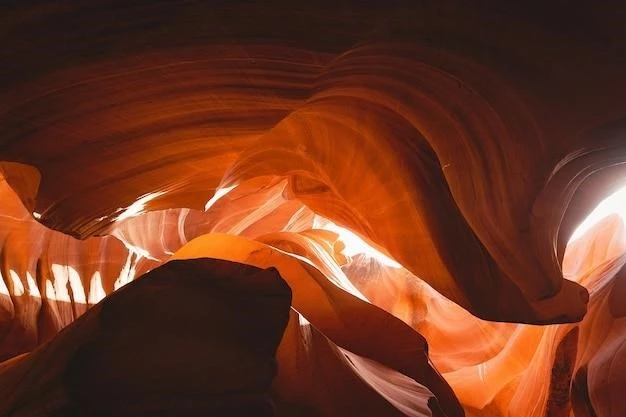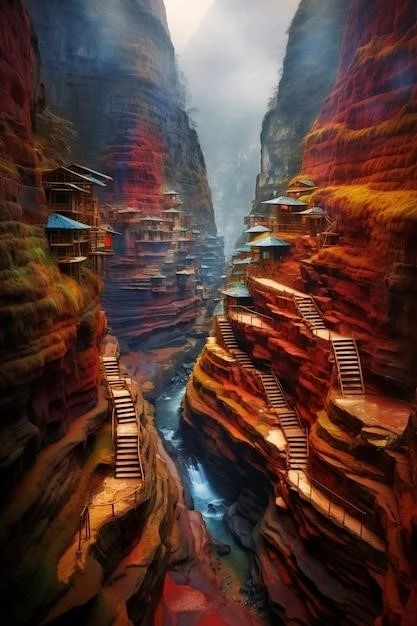The Grand Canyon: A Journey Through Time
The Grand Canyon, a UNESCO World Heritage site, is a breathtaking testament to the power of geological processes over millions of years․ Carved by the relentless Colorado River, the canyon reveals a vast and intricate history of the Earth, with rock layers that span billions of years․ This natural wonder offers an unparalleled glimpse into the deep past, allowing us to trace the evolution of our planet through its exposed strata․
A Layered History
The Grand Canyon’s magnificence lies not just in its scale, but also in its intricate layering, akin to a colossal layer cake․ Each layer, with its unique composition and texture, narrates a distinct chapter of the Earth’s geological past․ The oldest rocks, found at the bottom of the canyon, are primarily metamorphic and igneous rocks, formed under intense heat and pressure deep within the Earth’s crust․ These rocks, known as the Vishnu Basement Rocks, are estimated to be around 1․84 billion years old․
Resting upon the Vishnu Basement Rocks is the Grand Canyon Supergroup, a collection of tilted sedimentary and igneous rock layers formed between 1․2 billion and 700 million years ago․ These layers, with their varying shades and angles, tell a tale of ancient seas, shifting shorelines, and volcanic activity that shaped the landscape․
The upper layers of the Grand Canyon, primarily composed of sedimentary rocks like limestone, sandstone, and shale, record a period of approximately 525 to 270 million years ago․ These layers, laid down over millions of years as sediments settled in ancient seas and later compressed into rock, showcase a rich diversity of fossils, offering clues about the life forms that inhabited these prehistoric environments․
Unraveling the Timeline
The Grand Canyon’s rock layers are not merely visually stunning; they serve as a chronological record, allowing geologists to piece together the region’s complex history․
- The Precambrian Era: Represented by the Vishnu Basement Rocks and the Grand Canyon Supergroup, this era witnessed the formation of the Earth’s first continents and the earliest forms of life․
- The Paleozoic Era: The horizontal layers of sedimentary rock, rich in marine fossils, depict a time when the region was submerged beneath shallow seas․ These layers chronicle the evolution of marine life, from trilobites to early fish․
- The Mesozoic Era: While evidence of this era, known as the “Age of Dinosaurs,” is limited in the Grand Canyon, remnants of sedimentary layers indicate that the region was once again submerged under water․
- The Cenozoic Era: This era marks the uplift of the Colorado Plateau, which led to the formation of the canyon we see today․ The relentless erosive power of the Colorado River, cutting down through the layers of rock over millions of years, continues to shape and deepen the canyon․

A Window into Earth’s Processes
The Grand Canyon stands as a monumental example of geological processes․ The canyon’s vastness offers a unique opportunity to observe the effects of erosion, deposition, and tectonic uplift on a grand scale․
- Erosion: The Colorado River, with its powerful flow, continues to carve the canyon, exposing older rock layers and creating the intricate side canyons, buttes, and mesas that define the landscape;
- Deposition: The sedimentary layers of the Grand Canyon are a testament to millions of years of sediment deposition, showcasing how ancient environments, from shallow seas to coastal plains, shaped the region․
- Tectonic Uplift: The uplift of the Colorado Plateau, a result of the movement of tectonic plates, played a crucial role in the formation of the Grand Canyon․ This uplift provided the elevation necessary for the Colorado River to carve its deep path․

A Continuing Story
The Grand Canyon is not a static monument but a dynamic landscape that continues to evolve․ The ongoing erosion by the Colorado River, the weathering and breakdown of rock by wind and rain, and the subtle movements of the Earth’s crust ensure that the canyon’s story is far from over․ Every rock fall, every twist and turn of the river, and every change in the canyon’s profile adds a new line to this ongoing narrative of geological time․
As we stand on the rim of the Grand Canyon, we are not just observing a breathtaking vista but witnessing a profound record of Earth’s history․ Each layer of rock, each twist and turn of the canyon walls, tells a story of immense timescales, reminding us of the constant forces that have shaped our planet and continue to do so today․










